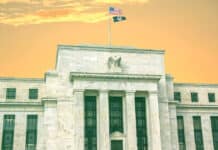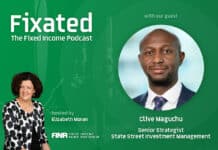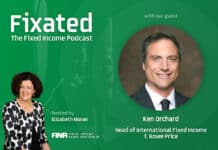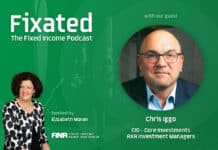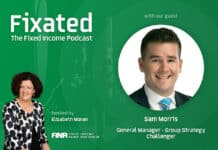
As investors navigate a macro environment clouded by political uncertainty, uneven growth and ongoing trade tensions, the US fixed income market is quietly reaffirming its core value.
According to Adam Whiteley, Head of Global Credit at Insight Investment, despite the daily volatility, fixed income is once again delivering on its traditional role in diversified portfolios.
“Amid all the day-to-day noise, it can be easy to forget that fixed income again offers the three things investors tend to want from the asset class: yield, income and ballast,” Mr Whiteley said.
Importantly, historical data supports the case for optimism. Over the past five decades, the US Aggregate Bond Market has only delivered negative returns twice when starting yields were above 4%, and both instances occurred during active Federal Reserve rate hiking cycles.

“Those two specific events were during rate hiking cycles, which is not our forward expectation,” Whiteley added, suggesting a more constructive outlook for bond investors going forward.
Focus on Credit Quality and Sector Exposure
Insight Investment currently favours positioning portfolios overweight to investment-grade and high-yield corporate bonds. Within these sectors, there’s a notable tilt toward higher quality issuers and industries less exposed to international tariff risks.
“We currently see value in being overweight investment grade and high yield corporate bonds, with a skew toward higher quality credits and those sectors that are less tariff sensitive,” Mr Whiteley said.
There is also growing interest in diversifying beyond traditional benchmarks. This includes allocations to “esoteric” or less mainstream asset-backed securities and select emerging market companies. These emerging market corporates may stand to benefit from strategic geopolitical shifts, particularly in the intensifying competition between the US and China for trading partners and control of global supply chains.
US Credit Outlook: Stable but Tight
In recent months, the US credit market has shown signs of stability. Lower corporate debt issuance, strong earnings, and stable leverage ratios have supported spreads and created a conducive environment for yield-focused buyers.
“US credit has proven more stable recently, with corporate bonds supported by yield buying, lower net issuance, stable leverage and reasonably strong earnings,” Whiteley explained.
However, he cautioned that tight credit spreads and a softening economic outlook may motivate investors to broaden their horizon.
“With the economy softening and spreads historically tight, investors may also be seeking to diversify to smooth the ongoing backdrop of volatility and uncertainty. We are seeing many considering expanding their exposure to encompass global bonds, which may make sense in a world of geopolitical uncertainty.”
High Yield: Resilience Amid Volatility
Perhaps one of the more surprising stories in 2025 has been the resilience of US high yield bonds. Despite increased volatility and macro headwinds, the sector has outperformed not just Treasuries and investment grade credit, but also US equities.
“Many investors have been surprised to learn that US high yield has outperformed Treasuries, investment grade bonds, and US equities despite the increase in volatility this year,” said Whiteley.
The evolution of the high yield market has played a big part in this. Improved credit quality and the growth of alternative financing markets—such as private credit and leveraged loans—have changed the composition of the sector.
“This isn’t the high yield market of 10 to 20 years ago,” Whiteley noted. “Credit quality has improved over time, private credit and leveraged loans have diverted some of the highly leveraged issuers away from traditional high yield bonds, and interest rate risk is less of a concern for investors given the shorter duration of the asset class.”
High yield bonds also offer a meaningful cushion. With current yields nearing 7.5%, a significant rise in yields would be required to wipe out 12-month total returns.
“Ignoring defaults, yields would have to rise nearly 250 basis points to take 12-month total returns to zero,” Whiteley explained. “This may be a more robust asset class than many think, especially when implementing a skew toward US domestic higher quality and less tariff-sensitive credits.”










